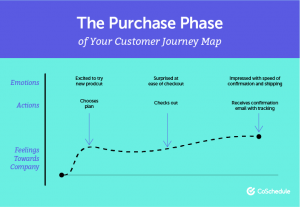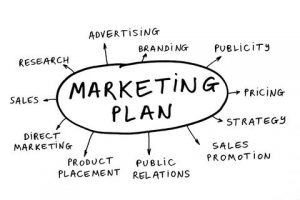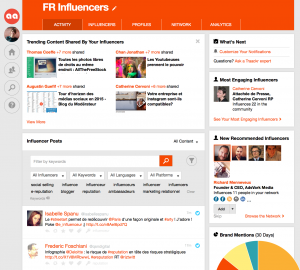— June 14, 2019
Fixing “profit leaks” in client delivery? Good data requires good time-tracking categories.
Time tracking—even temporarily—can help you plug Client Delivery “profit leaks” at your agency. But good troubleshooting requires good data.
Solution? Use my four baseline time-tracking categories—Billable, Business-Building, Professional Development, and Admin. And then customize 10-20+ subcategories to your agency.
Once you have a few months of good data, you can make better decisions. What if you currently have bad data—or no data—but don’t want to wait for the good stuff? You could act sooner, but you’re like to make a mis-informed decision.
This topic might sound tactical, but it’s actually quite important—because you can’t make the right strategic decisions without the right day-to-day data.
Let’s look at why this is important, why I recommend those four time-tracking categories, and how to pick your agency’s customized 10-20+ subcategories.
Why time-tracking categories are important
No one likes time tracking. But if your net profit margins are less than 20%, you likely have an expensive profit leak. And if some of that leakage is happening in the Delivery phase of the Agency Value Chain—as is frequently the case—you can’t accurately troubleshoot the problem without good time-tracking data.
The thing is, you can’t analyze the data if you don’t collect it. And when it comes to analyzing Delivery data, you really need at least a few months of data to get accurate insights. But even with 100% time tracking compliance, the data won’t be useful if you don’t use the right time-tracking categories.
You don’t need to track time forever—feel free to stop once you consistently get your net profit margins above 20%. But if profits are lower, consider tracking time temporarily (for a few months) to get the data you need to make better management decisions.
What are the right time-tracking categories?
Agency work fits into four primary worktype categories. Here’s my list:
1. Client Billables: client-delivery work that a current client has agreed to pay for; you’ll want to focus on increasing the “billable billed” time and eliminating the “billable unbilled” time
2. Business-Building: providing sales support to current opportunities, building systems to make their work more efficient, doing self-marketing for the agency itself, doing research about clients’ industries, developing products to generate residual income, or otherwise helping the agency improve as a business
3. Professional Development: things to improve employee skills
4. Admin: contributing to lower-value internal projects, as well as a catchall for things like PTO and holiday leave
Those four categories are important—but management decisions require something more granular. That’s where your unique time-tracking subcategories come in.
What are the right time-tracking subcategories?
You’ll need to customize the subcategories to your agency—but here’s my list of options to get you started!
1. Billable subcategory options
- Strategy
- Information Architecture
- User Research
- System Architecture
- Design
- Front-End Development
- Back-End Development
- QA
- SysAdmin
- Project Management [could subdivide, to reduce each line-item size—for instance: Scoping & Evaluation, Reconciliation, Internal Coordination, External Coordination, etc.]
- Client Call or Meeting
- Account Management [typically not billed to clients under this label]
- Creative Direction
- Copywriting
- Copy Editing
- Videography
- Other common SME-related roles, specific to your agency’s services
2. Business-Building subcategory options
- Sales & Sales Support
- Self-Marketing (for the agency itself)
- Internal Efficiency
- Client Industry Research
- Product Development
3. Professional Development subcategory options
- ProfDev
- Travel for ProfDev (e.g., requiring out-of-office time)
4. Admin subcategory options
- Holiday
- PTO
- Other Leave (e.g., Bereavement, Jury Duty, Sabbatical)
- Finance/Accounting
- Other Admin
The goal is to categorize activities into the point of the meeting. For instance, an “ad hoc meeting” might be “Client Call or Meeting” while “Developer planning meeting” might be “System Architecture” or perhaps something called “Planning.” (Then, in the notes, the employee would indicate what it involved.)
Worktypes are designed to help you plan and track budget consumption, to identify trends over time. You want them to be granular enough to be actionable, but not so granular that employees resent the level of detail they’re required to use. For instance, “ProfDev” doesn’t require subcategories.
How many time tracking subcategories should your agency have?
I recommend shooting for no more than 20 subcategories, but the right number depends on your agency.
One of my clients has 60+ subcategories! I think that’s too many subcategories—but their employees requested this, because they wanted to log their work at a super-granular level.
Where should each employee focus their time?
Not every time-tracking category is equal. For an individual employee, prioritization will vary by role and by project lifecycle. For instance:
- People doing self-marketing for the agency should always de-prioritize client work because billables take them away from their primary job.
- Managers should put their managerial role ahead of client billables. That is, their job is to maximize their team’s billable hours, although the manager will likely have some client-billable work, too.
- Everyone should prioritize time-tracking (admin work) at the end of each day, to ensure they’re up to date.
I recommend counting “Business-Building” time as “favorable” Non-Billable time. That is, Billable is typically best, but Business-Building (e.g., self-marketing, sales support, etc.) is better than purely Admin time (unless someone is in a primarily admin-oriented role).
What about your time? As an agency leader, you’re ideally focusing on business-building rather than client-billables. This will shift as you grow.
Customizing this to your agency
As I noted earlier, you don’t need to track time forever—if you get your net profit margins to 20-30%—but consider doing it temporarily to get the data you need to make better management decisions.
Still on the fence about taking action? Creating the right time tracking categories—and a process and system to ensure your team gives you good data—helps you answer managerial questions like these:
- Are you doing bad estimates… or are employees missing the estimates?
- What project or retainer phases tend to be on-budget, over-budget, or under-budget?
- When is it time to hire another XYZ role?
Ready to get started? Consider these points:
- What’s the right time-tracking software to use? Ideally it’s one that ties into your other systems. If you’re thinking of switching, here’s my list of dozens of options.
- Assign your operations person to come up with the right combo of worktype categories, and review them before you move forward on implementation.
- Don’t work in a vacuum; get feedback from your front-line team before you finalize the worktype list and process.
- Allow time for your team to fully transition to this—it may take a few months to fully transition things, depending on your starting point.
Question: How can you use your agency’s time tracking data to make better decisions?
Business & Finance Articles on Business 2 Community
(22)






